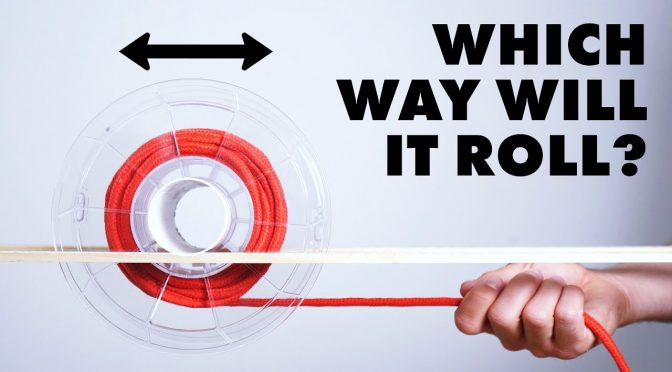In a fascinating video titled “The Spool Paradox” by Steve Mould, the seemingly simple act of pulling a thread from a spool is explored in depth. The video presents an intriguing exploration of physics, unraveling the counterintuitive behavior of a spool when a thread is pulled from it. This article will delve into the key points discussed in the video, providing a comprehensive understanding of the spool paradox.
Contents
- The Spool Paradox
- Understanding the Paradox
- The Role of Friction
- The Magic Angle
- The Mechanical Advantage
- The video
- References
The Spool Paradox
The Spool Paradox is a physical phenomenon where a spool moves towards the direction of the pull when a thread wrapped around it is tugged. This behavior contradicts our intuitive expectation that the spool should move in the opposite direction. The explanation for this paradox lies in the principles of force and motion.
The video begins with a demonstration: when the end of a thread on a spool is tugged, the spool zips towards the puller, and when released, it rolls away. This peculiar behavior, contrary to our intuitive expectations, is what forms the basis of the spool paradox. The video credits the Physics Girl channel for sparking this exploration.
Understanding the Paradox
When a force is applied to an object, it tends to move in the direction of the force. In the case of the spool, when the thread is pulled, a force is applied at the point where the thread leaves the spool. This force causes the spool to rotate and move towards the direction of the pull (Halliday, Resnick, & Walker, 2013).
The video presents two ways of understanding why the spool behaves this way. The first is by considering the forces at play. When you pull the thread, you’re applying a force that causes the spool to move around its pivot point in the same direction as the force. The second way is by considering what happens to the thread when the spool is rolled. When the spool is rolled away, it doesn’t unspool enough thread to compensate for the distance it has traveled, resulting in the thread being pulled from your hands.
The Role of Friction
The behavior of the spool also depends on the friction between the spool and the surface it’s on. The friction must be sufficient to prevent the spool from slipping and to allow it to roll instead. If the friction is not enough, the spool will simply slide without rolling (Serway & Jewett, 2013).
The Magic Angle
The video also introduces the concept of a ‘magic angle’, the angle at which the spool neither rolls towards nor away from the pulling force. This occurs when the direction of the force passes through the pivot point of the spool, eliminating any turning force around that point. This concept is related to the principle of torque in physics, where the torque (or turning force) is zero when the force is applied through the pivot point (Young & Freedman, 2012).
The Mechanical Advantage
As the spool fills up with thread, it gains a mechanical advantage over the puller. This is a concept in physics where the ratio of the output force produced by a machine to the applied input force is calculated. In the case of the spool, the mechanical advantage becomes infinite when the spool is nearly full, limited only by the friction between the spool and the surface it’s on (Hibbeler, 2016).
The video
References
- Halliday, D., Resnick, R., & Walker, J. (2013). Fundamentals of Physics. Wiley.
- Serway, R. A., & Jewett, J. W. (2013). Physics for Scientists and Engineers. Cengage Learning.
- Young, H. D., & Freedman, R. A. (2012). University Physics. Pearson.
- Hibbeler, R. C. (2016). Engineering Mechanics: Statics & Dynamics. Pearson.

